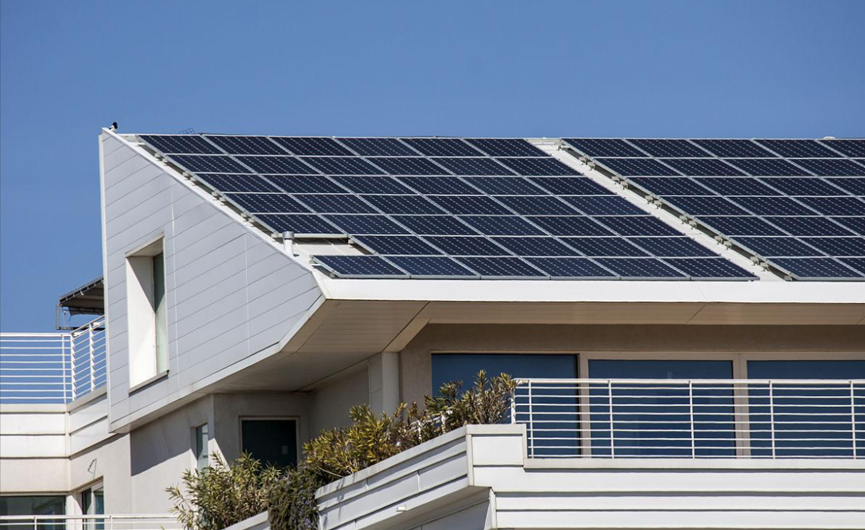1. Photon absorption:
Sunlight shines on photovoltaic cells (usually made of silicon or other semiconductor materials). The energy carried by photons (elementary particles of light) is absorbed by the semiconductor materials in photovoltaic cells.
2. Excite electrons:
If the energy of the absorbed photons is large enough (greater than the "band gap" of the semiconductor), it will "kick" the electrons in the semiconductor atoms from the valence band to the conduction band, freeing them from the nucleus and becoming free electrons. This process simultaneously creates a negatively charged free electron and a positively charged "hole" (the vacancy left after the electron leaves) in the material.
3. Formation of electric field (built-in electric field):
The core structure of a photovoltaic cell is a PN junction. This is a process during the manufacturing process, through the doping process, making one part of the semiconductor become an electron-rich N-type region and the other part become an electron-deficient (hole-rich) P-type region. Near the interface where the P-type and N-type semiconductors contact, a built-in electric field composed of positive and negative ions will be formed, with the direction from the N region to the P region.
4. Charge separation:
The free electrons and holes generated in step 2 move randomly inside the semiconductor. When they diffuse or drift to the built-in electric field area near the PN junction, the electric field force begins to work: the negatively charged free electrons are pushed to the N-type region by the electric field. The positively charged holes are pushed to the P-type region by the electric field. In this way, the photogenerated carriers (electrons and holes) are effectively separated by the built-in electric field, preventing them from quickly recombination and disappearance.
5. Current generation:
The result of charge separation is that the N-type region accumulates additional negative charges (electrons). The P-type region accumulates additional positive charges (holes, equivalent to the lack of electrons). When the external circuit of the photovoltaic cell is connected (for example, a light bulb or electrical appliance is connected), a path is formed. The electrons accumulated in the N region will flow to the P region through the external circuit (because the positive charge in the P region attracts electrons). The flow of electrons in the circuit forms a current. At the same time, the electrons flowing to the P region will recombine with the holes there.
6. Generating voltage:
The accumulation of charge in the P region and the N region forms a potential difference at both ends of the battery, which is the voltage (DC voltage).
7. DC output:
The voltage and current generated by a single photovoltaic cell are small (the open circuit voltage of a typical silicon cell is about 0.5-0.6V). In order to obtain practical voltage and power, many photovoltaic cells need to be connected in series (to increase voltage) and in parallel (to increase current) and packaged into a photovoltaic module (solar panel).
8. System-level energy conversion:
l DC utilization: The generated DC can be directly used to power DC loads (such as LED lights, mobile phone charging, and DC appliances in off-grid systems).
l AC conversion (grid/home use): For loads that require AC power or to transmit power to the grid, an inverter is required. The inverter converts the DC power generated by the photovoltaic module into AC power that matches the grid frequency and voltage.
l Energy storage: In off-grid systems or grid-connected systems that require backup power, DC power (or AC power converted by an inverter) can charge batteries and store electrical energy for use when there is no sunlight.
Summary of key points:
l Core mechanism: Photoelectric effect (photons excite electrons to produce electron-hole pairs).
l Separation key: The built-in electric field of the PN junction forces the separation of photogenerated electrons and holes.
l Energy flow: Solar energy → Photovoltaic cell absorption → Produce electron-hole pairs → Built-in electric field separates charges → Forms voltage across the battery → Connects to external circuit → Electrons flow to form current → Output electrical energy (DC).
l Final form: DC power (can be used directly or stored) or converted to AC power through an inverter (for AC loads or grid connection).

As a professional solar panel manufacturer, Ningbo Sun Earth integrates R&D, manufacturing and sales, and creates efficient and reliable photovoltaic products with advanced technology and strict quality control. Sun Earth use automated production lines and international standard testing processes to ensure that each solar panel has excellent power generation performance and a service life of more than 25 years.
Core advantages
✔ Efficient power generation: using advanced battery technologies such as PERC and TOPCon Module, the module conversion efficiency is leading in the industry
✔ Stable and durable: passed multiple harsh environmental tests such as anti-PID, anti-salt spray, and anti-wind pressure
✔ Intelligent production: digital control of the entire process to ensure product consistency and yield
✔ Customized service: special components such as different powers, sizes and BIPV can be provided according to needs
Sun Earth solar panels have been widely used in household roofs, industrial and commercial power stations, photovoltaic poverty alleviation and other projects, and have won the trust of customers at home and abroad with excellent quality. Choosing Sun Earth Solar means choosing a long-lasting and efficient green energy solution!
Keywords:
Sun Earth Solar, Ningbo Sun Earth, Sun-Earth, Sun Earth, TOPCon Module, solar panels, photovoltaic systems


